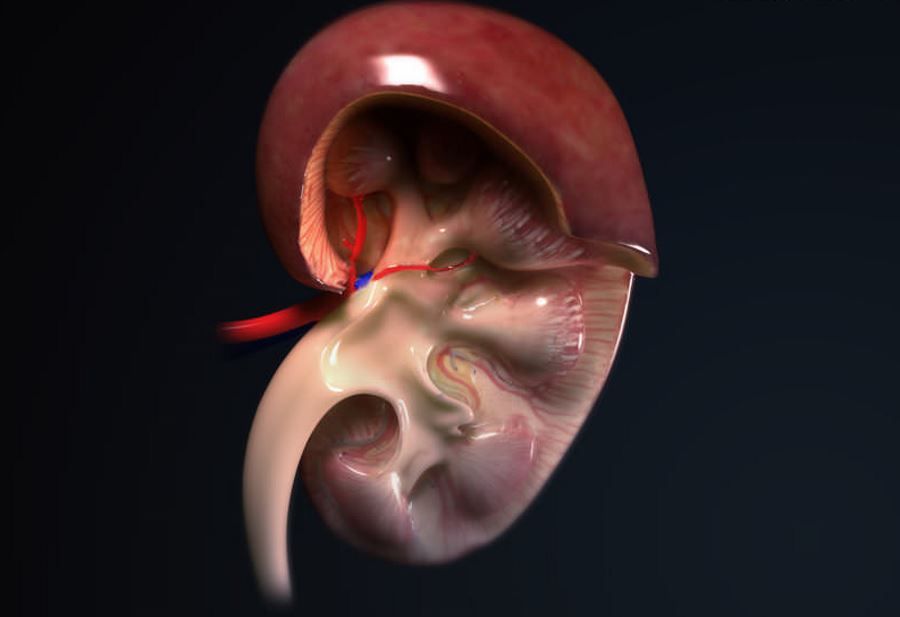New research on Chopin’s heart. Tuberculous pericarditis the probable cause of death
Tuberculous pericarditis was the most likely direct cause of Frederic Chopin’s death, according to a study by Polish scientists. Their results are to be published in “The American Journal of Medicine”.
Inspection of Chopin’s heart, made in 2014 by the teamoł Polish researchers, revealed that it is exquisitely preserved and conserved. Observed anatomical changes indicate that the immediate cause of Chopin’s death was most likely related to tuberculosis – pericarditis. The pericardium is a smooth membrane thatowho surrounds and protects the heart. Tuberculous inflammation leads to thickening of the pericardium.
Detailedoły of Chopin’s heart research will include a paper accepted for publication by the „The American Journal of Medicine”. Its first author is prof. Michał Witt – head of the Department of Molecular and Clinical Genetics at the Institute of Human Genetics of the Polish Academy of Sciences in Poznań. The forthcoming work of Polish scientistsoin an editorial dedicated to the prestigious magazine „Nature”.
Frédéric Chopin died on October 17, 1849, at just 39 years old. He was frail and sickly from early childhood. At the age of 28 with a height of 170 centimetersoin growth weighed 45 kg. During his lifetime, he was diagnosed with tuberculosis and treated for the disease (among other hungerowkami and blood letting). In Paris in 1831, at the age of 21, he had his first episode of the not uncommon accompanying tuberculosis of hemoptysis, poAfter that, he often suffered from infections drog breathing. His cough bothered him all his life, and for the last ten years he took opium on sugar for this reason.
„I have been sick these past two weeks like a dog: got cold despite 18 degrees of heat, roż, oranges, palms and figs. 3 Doctorow of all the island’s most famous: one smelled what I spit, another tapped where I spit from, a third maced and listened to how I spit. One mohe said that I was dead, the second – that I was dying, the third – that I was going to die” – Chopin wrote on December 3, 1838, while staying in Majorca, in a letter „To Julian Fontana in Paris”.
Since Chopin was afraid of being buried alive (a fear common in the 19th century, to mention Alfred Nobel) an autopsy was performed in accordance with his wishes. The report of the post-mortem examination by the eminent professor of pathological anatomy Jean Cruveilhier has been lost. However, if one is to believe the accounts of osob, whichore had access to him, Cruveilhier cited pulmonary and laryngeal tuberculosis as the cause of death, but also encountered pathological changes thatorych could not interpret the.
Over the years there have been hypotheses about other chorob. Specialists claimed that Chopin mohead suffer from cystic fibrosis, deficientor alpha1-antitrypsin, mitral valve stenosis, syndromeoł Churg-Strauss, allergic bronchopulmonary aspergillosis, hypogammaglobulinemia, pulmonary hemosiderosis, chronic pulmonary abscesses or pulmonary arteriovenous malformations. „No moin people that I was sick, because they will make a fairy tale” – Chopin wrote in a postscript to his letter of December 3, 1838.
Frederic Chopin was buried in Paris, in the Pere-Lachaise cemetery. However, his heart, preserved in a jar of alcohol, found its way to Warsaw around 1850, brought by the deceased’s sister Ludwika. The casket containing the artifact was placed in the left pillar of St. Peter’s Basilica. Cruveilhier only in 1880. (For the duration of the Warsaw Uprising, they were evacuated to Milanowka). Faced with rumors of damage to the exhibit, in 2014 the teamoł scientistow obtained permission to examine Chopin’s heart – But without opening the jar. A non-invasive external inspection was conducted on April 14, 2014.
As moPAP on September 17, 2014, during a press conference of Prof. Tadeusz Dobosz of the Department of Forensic Medicine at the Wrocław Medical Academy, someorzy historians doubted whether the container, embedded in one of the pillars of theoin the church actually contains the composer’s heart. Research has dispelled these doubts.
– There were reasons for concern. In our cathedral there is a rown centuries against the heart of Chopin’s museum, in which theorym we have about 500 preparationsoin human tissues, of which about 50 were never opened and preserved. Normally, tissues do not last this long without damage. In this case it was different. Anatomopathologist Jean Cruveilhier, whoory dissected Chopin and prepared the preservative, did not use a glass jar, but a crystal one. The lid was perfectly lapped to the jar, very tight,” explained prof. Dobosz.
– The state of preservation, the appearance of the preparation, the type of thread used to suture the heart after the autopsy, performed in Paris, the type of jar – all of these, in our opinion, are of the period. The fact is that the description is fully consistentoin zaroIn view of the rumors of damage to the jar, as well as to the boxes in which it is located, and the ascertained state of facts, he stressed.
Usually when closing the jaroin lubricates the ground with a small amount of Vaseline. Cruveilhier did not regret the preparation – he gave so much of it that it dripped into the jar, forming a sheepskin on the surface of the liquid, further protecting it from evaporation.
The state of preservation and preservation of Chopin’s heart was considered very good. Only a slight loss of preservative fluid was found, so the jar was sealedoj with the help of wax. During the inspection, the jar was not opened.
– We know that the heart is in excellent condition, and our knowledge of Chopin has expanded somewhat. Due to the color of the fluid, we do not rule out that the heart is in cognac. The most likely immediate cause of the composer’s death was tuberculosis – some anatomical changes are visible on the heart, whichore indications of this – moIn 2014 prof. Dobosz.
Because the jar was not opened, DNA analysis could not be done to confirm or rule out, genetically determined cystic fibrosis. Earlier proin order to analyze the DNA on the basis of the remainsoin from Pere-Lachaise have failed due to the genetic material-destroying acid reaction of the soil. The next inspection of the heart is scheduled for 2064.


